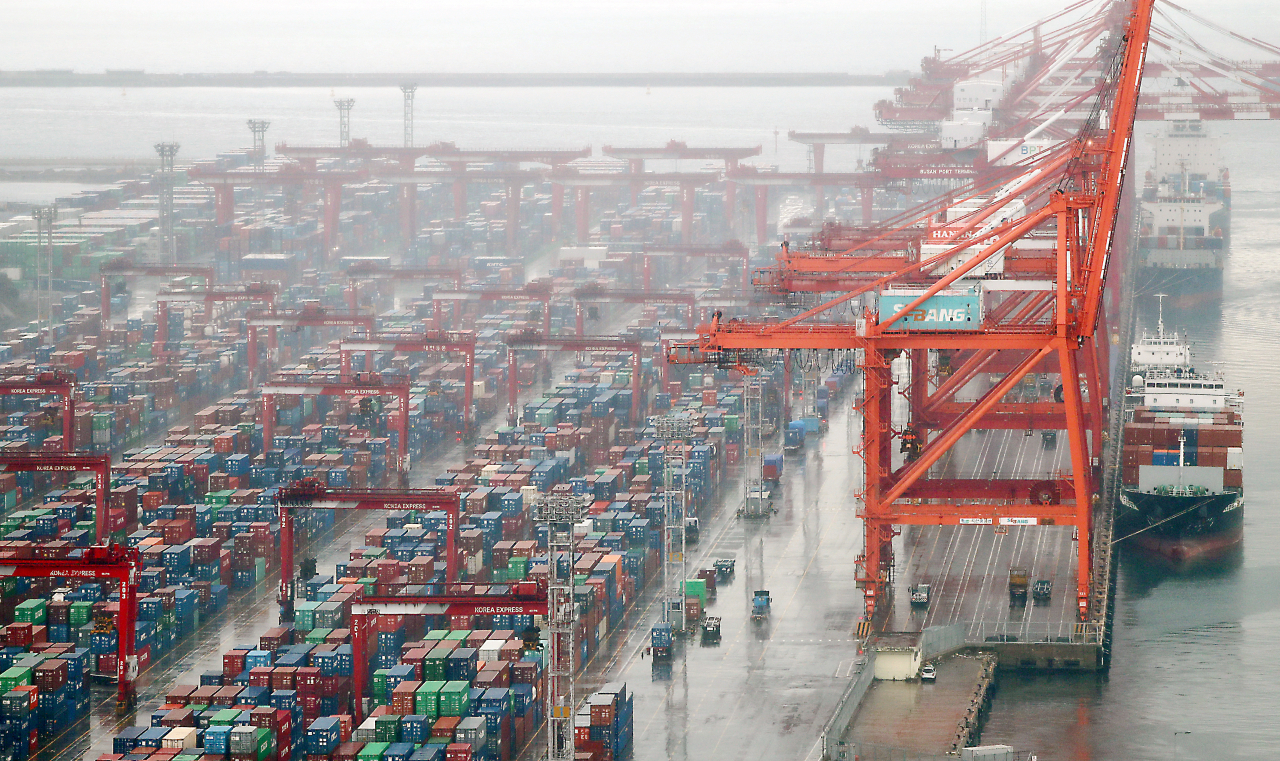Korean companies suffer from weakening stability, fiscal health
Lowering profitability, growing debt coupled with rate hikes weigh down prospects for Korean businesses next year: KCCI
By Park Han-naPublished : Dec. 26, 2022 - 16:39

South Korean companies have seen revenue growth this year, but their fiscal health has deteriorated due to increased debt and lowered profitability, according to a report from a major business lobby group Monday.
Despite their growing revenue, the slowdown in the growth rate, inventory piling up and soaring borrowing costs draw concerns as the country’s economy is largely expected to see headwinds next year, with sluggish exports and uncertainties in the global market.
“Companies have put much effort into exports and domestic sales despite the tough economic environment, but their operating profits have actually decreased,” said Kang Seok-gu, head of the Korea Chamber of Commerce and Industry’s research division.
The KCCI and credit rating agency KoDATA compiled data from 1,612 listed firms, including 160 conglomerates, 778 midsized firms and 674 smaller companies. Their financial status was analyzed into four categories -- growth, profitability, stability and inventory turnover.
The companies’ cumulative sales through the third quarter of this year grew by 19 percent compared to the same period last year. But the growth rate has slowed. The sales growth rate increased by 0.5 percentage points from the second quarter to the third quarter last year, while the figure dropped by 2.3 percentage points for the same period in 2022.
“Large conglomerates’ operating rates have been lowered compared to when they were in the middle of the COVID-19 pandemic,” the lobby group representing some 300 companies here said.
Total assets increased by 2.8 percent in the quarter that ended in September from the previous quarter, but total liabilities increased by 4.4 percent over the same period, showing that companies sought to expand business by relying on debt.
The combined total assets of the analyzed companies increased by 39 trillion won ($30.5 billion), while total liabilities expanded by 40 trillion won, meaning the increase in debt exceeded the increase in assets.
This is partly because the Bank of Korea began to tighten its monetary policy stance in August last year, hiking the benchmark interest rate from a record low of 0.5 percent to 3.25 percent now.
The central bank recently hinted that it will carry out more key interest rate hikes next year.
"Disruptions in supply chains, soaring interest rates and high energy prices that incur more costs for companies are weighing down the business prospects for next year," it said.
Indicators of corporate stability also fell at the same time. Due to the increase in external borrowing, both the cumulative debt ratio (81.4 percent) and debt dependence (19.4 percent) of all companies in the third quarter increased from the same period last year, from 74.2 and 18.9 percent, respectively.
In particular, the debt ratio, which means the amount of corporate debt compared to equity capital, hit the highest since the outbreak of COVID-19, and the rate of increase compared to the previous year was 7.2 percentage points, far exceeding the increase of 2.6 percentage points in 2019-20 when COVID-19 took its hardest toll on the economy.
The dismal outlook for Asia's fourth-largest economy next year indicates that Korean companies will have a tough road ahead.
Last week, the BOK lowered its growth forecast for he Korean economy in 2023 to 1.7 percent from 2.1 percent it expected in August. The latest projection marks the lowest level since the global financial crisis hit the country in 2009.
The central bank has forecast GDP growth in 2022 at 2.6 percent.



![[Exclusive] Korean military set to ban iPhones over 'security' concerns](http://res.heraldm.com/phpwas/restmb_idxmake.php?idx=644&simg=/content/image/2024/04/23/20240423050599_0.jpg&u=20240423183955)

![[Graphic News] 77% of young Koreans still financially dependent](http://res.heraldm.com/phpwas/restmb_idxmake.php?idx=644&simg=/content/image/2024/04/22/20240422050762_0.gif&u=)



![[Pressure points] Leggings in public: Fashion statement or social faux pas?](http://res.heraldm.com/phpwas/restmb_idxmake.php?idx=644&simg=/content/image/2024/04/23/20240423050669_0.jpg&u=)










